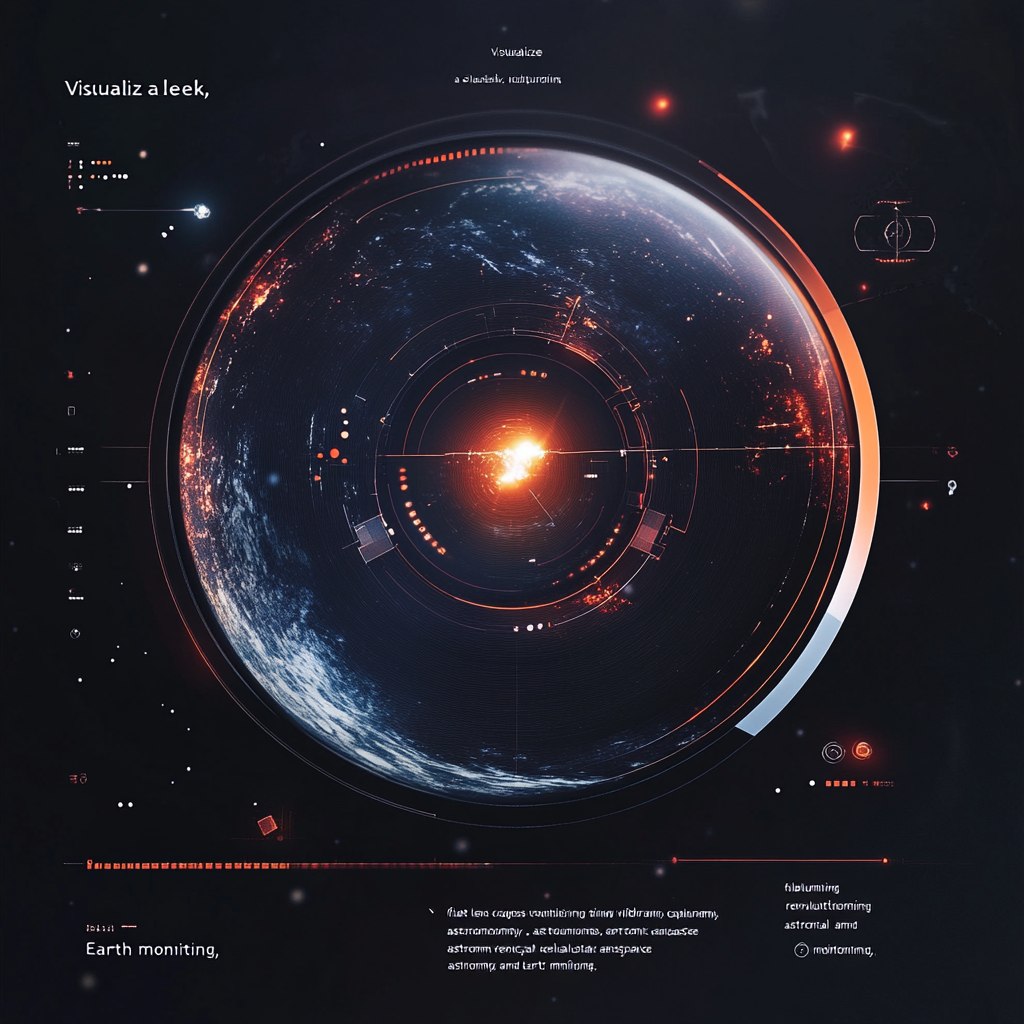
Revolutionary Telescope Lens Enhances Space Imagery
In the grand cosmic dance of the universe, where galaxies swirl and stars twinkle like diamonds scattered on a dark velvet backdrop, clarity has always been the elusive goal for stargazers, scientists, and the merely curious. The age-old quest for sharper images of our celestial neighbors has largely revolved around those brilliantly designed, but often cumbersome, traditional telescopes. You'd think that centuries of innovation would have brought us delightful visual treats from the depths of space, but until now, we've been limited by the heft of curved lenses and mirrors. Enter stage left, a groundbreaking innovation from the engineering minds at the University of Utah that promises to flip the astronomical image game on its head! Say hello to the flat lens—a technology that could be the sparkly new toy we didn’t know we desperately needed.
So, let’s dive into the woes of conventional optics for a moment. Traditional lenses and mirrors are, quite frankly, a bit of a pain. They're heavy. They're bulky. And guess what? They tend to come with hefty price tags too! Imagine trying to haul around a telescope the size of a small car just to catch a glimpse of the moon’s unflattering craters—now that's an imbalance of nature. As the quest for sharper images continues, traditional lenses have become increasingly thick and weighty, which only complicates things. While mirrors can be lighter, they also carry with them the curse of distortions and imperfections—like a bad filter on photos that should've come out sensational.
Now, some ingenious souls have tried to sidestep these old-school limitations with alternative designs, like diffractive lenses. These nifty gadgets might sound smart—a Fresnel zone plate, for instance, uses structured patterns to bend light to its will rather than relying on a curve. But, alas, even those seem to suffer from chromatic aberration, which, let’s face it, turns vibrant colors into a sad smear of muddy hues. That’s not exactly the vibrant view of the cosmos we dream of, is it? The endless quest for astronomical clarity just keeps getting murkier.
But hold on to your telescopes, friends! The team at the University of Utah, under the stewardship of the brilliant engineering professor Rajesh Menon, has cracked the code with their creation of a large-aperture flat lens. This is not just a minor adjustment to an old idea. They’ve conjured up a multi-level diffractive lens (MDL) that aims to resolve all those annoying issues we just mentioned. The beauty of it? This modern marvel can focus light across a broad spectrum—from 400 to 800 nanometers—while slashing the weight and size usually required.
The secret sauce here is in the design. Picture this: microscopically tiny concentric rings etched onto a substrate, instead of the cumbersome ridges of those traditional diffractive lenses. These little wonders are specialized to minimize the dreaded chromatic aberration, meaning all visible wavelengths of light can focus as they should, delivering that full-color, pin-sharp image we've always craved. How cool is that? The lens was handcrafted using sophisticated computational design methods, combined with advanced lithography techniques. Think of it like being a high-tech chef in a laboratory kitchen, whisking together elements to create optical perfection.
Once the engineers had their shiny new toy ready, it was time to test its prowess. They rigged up a custom optical system and outfitted it for use in telescopes. The results? Stellar—the lens captured remarkable images of the sun and moon, revealing intricate details like sunspots and lunar craters in all their glory! It’s like someone finally turned up the brightness and turned down the blur on the universe.
But hold on, the implications of this breakthrough extend far beyond just gazing at the moon for a poetry night. Imagine the potential this technology holds for astronomy and Earth observation—suddenly, lightweight telescopes become lightweight satellites and drones, paving the way for soar-away missions that won’t cost us an arm and a leg. Could we be looking at a paradigm shift in how we see our planet from above? Yes, please!
The aerospace industry, which relies heavily on efficient imaging gear for satellites, reconnaissance, and drones, stands to benefit immensely too. Nobody likes hauling around oversized equipment, right? A compact, high-performance lens? Now, that’s something every aerospace engineer would want to add to their toolbox. It could well redefine what we expect from optical technology in the years to come.
But let's not halt the excitement there. The ripples of this flat lens innovation could extend into areas such as medical diagnostics and environmental monitoring. Imagine how high-resolution imaging could enhance our analysis efforts in medicine or help us keep a better eye on our precious planet.
In conclusion, the innovative leap made by the team at the University of Utah with their flat lens is not just a delightful tidbit in the world of optics—it’s a giant leap for mankind's vision of the universe. With brilliant computational design and precise manufacturing techniques, they’ve condensed the prowess of traditional optics into a sleek, revolutionary package. As we peer into the future, the horizon gleams with promise. This flat lens might be the key to unlocking richer experiences in all spheres, whether you are an astronomer, a researcher, or a technology enthusiast with a love for the intricacies of our world.
Want to stay up to date with the latest news on neural networks and automation? Subscribe to our Telegram channel: @channel_neirotoken
And remember—the future of imaging is flat, and it’s shining brighter than ever, ready to show us the universe in ways we never imagined. Isn’t that just magical?

